5-BROMO-4-CHLORO-3-INDOLYL B-D-
Synonym(s):X-GlcA;X-glucuronide CHA salt
- CAS NO.:114162-64-0
- Empirical Formula: C20H26BrClN2O7
- Molecular Weight: 521.79
- MDL number: MFCD13185253
- EINECS: 601-302-0
- SAFETY DATA SHEET (SDS)
- Update Date: 2024-12-18 14:08:52
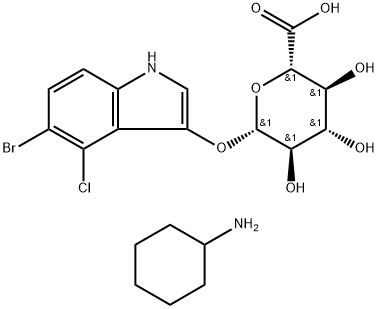
What is 5-BROMO-4-CHLORO-3-INDOLYL B-D-?
Chemical properties
White Solid
The Uses of 5-BROMO-4-CHLORO-3-INDOLYL B-D-
5-Bromo-4-chloro-3-indolyl β-D-glucuronide cyclohexylammonium salt has been used as a histochemical reagent in X-GLUC staining.
The Uses of 5-BROMO-4-CHLORO-3-INDOLYL B-D-
Suitable for use in selection of recombinant bacterial colonies with the lac+ phenotype.
X-GlcA has been used in histochemical staining of root sections for light microscopic observation.
What are the applications of Application
XGLUC Cyclohexylammonium Salt is a chromogenic substrate for β-glucuronidase gene detection
General Description
X-GlcA is a chromogenic substrate for β-galactosidase, used to determine the presence or absence of a cloned DNA insert in bacteria growing on agar plates. X-GlcA is designed to replace X-Gal in blue-white selection of recombinant bacterial colonies with the lac+ phenotype.
Biochem/physiol Actions
5-bromo-4-chloro-3-indolyl-β-D-glucuronide sodium salt (X-GlcA) is a colorless substrate. The pre-immobilized X-GlcA can be converted by β-glucuronidase enzyme, synthesised by?Escherichia coli.
Properties of 5-BROMO-4-CHLORO-3-INDOLYL B-D-
| Melting point: | 228-230°C |
| alpha | -87~-94°(20℃/D)(c=1,H2O-DMF)(calculated on the dehydrous basis) |
| Density | 1.4241 (rough estimate) |
| refractive index | 1.6110 (estimate) |
| storage temp. | -20°C |
| solubility | DMF: soluble |
| form | tablet |
| color | White to off-white or colorless |
| Stability: | Hygroscopic |
| EPA Substance Registry System | .beta.-D-Glucopyranosiduronic acid, 5-bromo-4-chloro-1H-indol-3-yl, compd. with cyclohexanamine (1:1) (114162-64-0) |
Safety information for 5-BROMO-4-CHLORO-3-INDOLYL B-D-
| Signal word | Warning |
| Pictogram(s) |
 Exclamation Mark Irritant GHS07 |
| GHS Hazard Statements |
H302:Acute toxicity,oral H315:Skin corrosion/irritation H319:Serious eye damage/eye irritation H332:Acute toxicity,inhalation H335:Specific target organ toxicity, single exposure;Respiratory tract irritation |
| Precautionary Statement Codes |
P261:Avoid breathing dust/fume/gas/mist/vapours/spray. P280:Wear protective gloves/protective clothing/eye protection/face protection. P305+P351+P338:IF IN EYES: Rinse cautiously with water for several minutes. Remove contact lenses, if present and easy to do. Continuerinsing. |
Computed Descriptors for 5-BROMO-4-CHLORO-3-INDOLYL B-D-
| InChIKey | PSBARFROSMJLJR-OXLZRBRISA-N |
New Products
Tert-butyl bis(2-chloroethyl)carbamate 4-Methylphenylacetic acid N-Boc-D-alaninol N-BOC-D/L-ALANINOL 3-Morpholino-1-(4-nitrophenyl)-5,6-dihydropyridin- 2(1H)-one Furan-2,5-Dicarboxylic Acid Tropic acid DIETHYL AMINOMALONATE HYDROCHLORIDE 1,1’-CARBONYLDIIMIDAZOLE R-2-BENZYLOXY PROPIONIC ACID 1,1’-CARBONYLDI (1,2-4 TRIAZOLE) N-METHYL INDAZOLE-3-CARBOXYLIC ACID (2-Hydroxyphenyl)acetonitrile 4-Bromopyrazole 5-BROMO-2CYANO PYRIDINE 5,6-Dimethoxyindanone 5-broMo-2-chloro-N-cyclopentylpyriMidin-4-aMine 2-(Cyanocyclohexyl)acetic acid 4-methoxy-3,5-dinitropyridine 2-aminopropyl benzoate hydrochloride 1-(4-(aminomethyl)benzyl)urea hydrochloride diethyl 2-(2-((tertbutoxycarbonyl)amino) ethyl)malonate tert-butyl 4- (ureidomethyl)benzylcarbamate Ethyl-2-chloro((4-methoxyphenyl)hydrazono)acetateRelated products of tetrahydrofuran
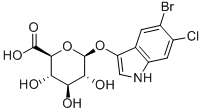
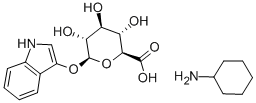
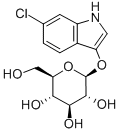


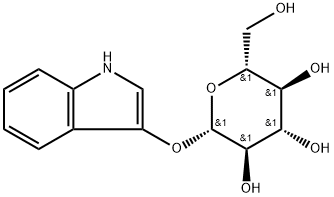
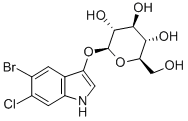

You may like
-
 X-Beta-d-glcua dcha h2o 95% CAS 114162-64-0View Details
X-Beta-d-glcua dcha h2o 95% CAS 114162-64-0View Details
114162-64-0 -
![5-Bromo-4-chloro-3-indolyl β-D-Glucuronide Cyclohexylammonium Salt [for Biochemical Research] CAS 114162-64-0](https://img.chemicalbook.in//Content/image/CP5.jpg) 5-Bromo-4-chloro-3-indolyl β-D-Glucuronide Cyclohexylammonium Salt [for Biochemical Research] CAS 114162-64-0View Details
5-Bromo-4-chloro-3-indolyl β-D-Glucuronide Cyclohexylammonium Salt [for Biochemical Research] CAS 114162-64-0View Details
114162-64-0 -
 X-GlcA CAS 114162-64-0View Details
X-GlcA CAS 114162-64-0View Details
114162-64-0 -
 5-Bromo-4-chloro-3-indolyl β-D-glucuronide cyclohexylammonium salt CAS 114162-64-0View Details
5-Bromo-4-chloro-3-indolyl β-D-glucuronide cyclohexylammonium salt CAS 114162-64-0View Details
114162-64-0 -
 1975-50-4 98%View Details
1975-50-4 98%View Details
1975-50-4 -
 14714-50-2 (2-Hydroxyphenyl)acetonitrile 98+View Details
14714-50-2 (2-Hydroxyphenyl)acetonitrile 98+View Details
14714-50-2 -
 118753-70-1 98+View Details
118753-70-1 98+View Details
118753-70-1 -
 733039-20-8 5-broMo-2-chloro-N-cyclopentylpyriMidin-4-aMine 98+View Details
733039-20-8 5-broMo-2-chloro-N-cyclopentylpyriMidin-4-aMine 98+View Details
733039-20-8